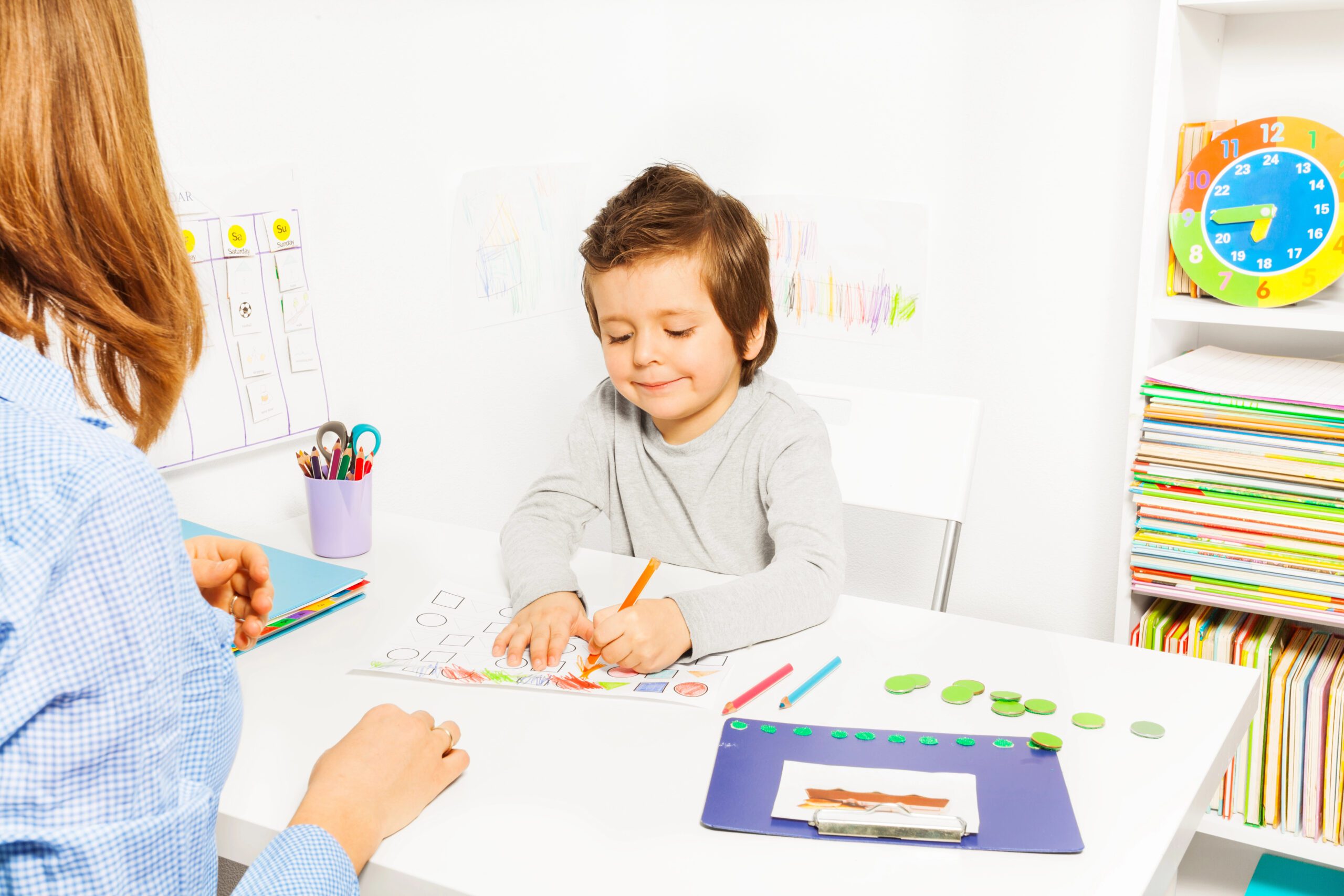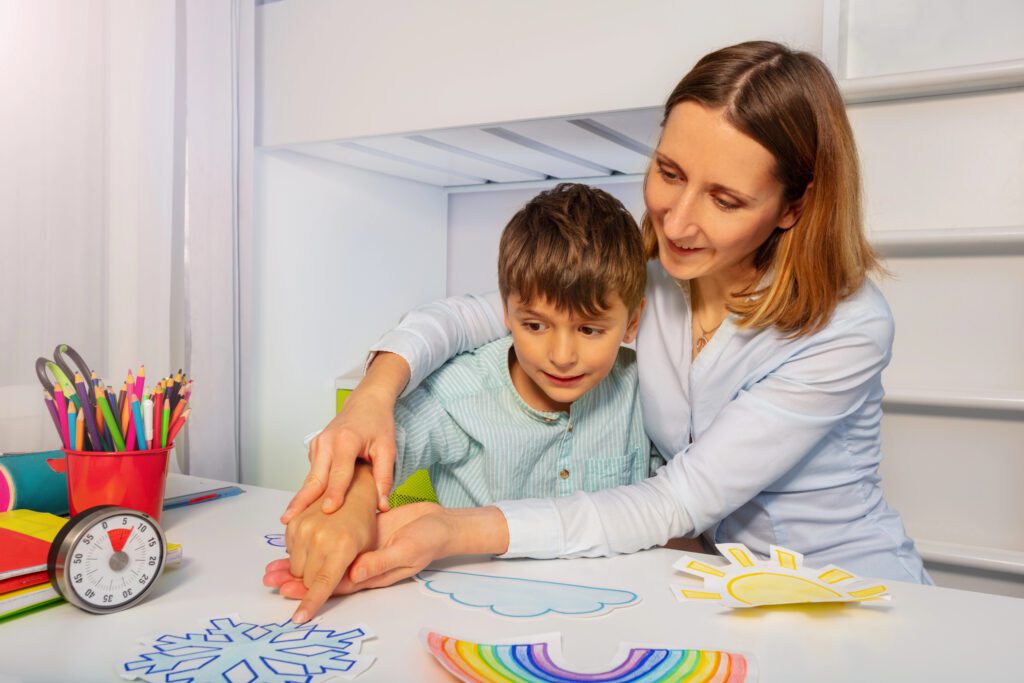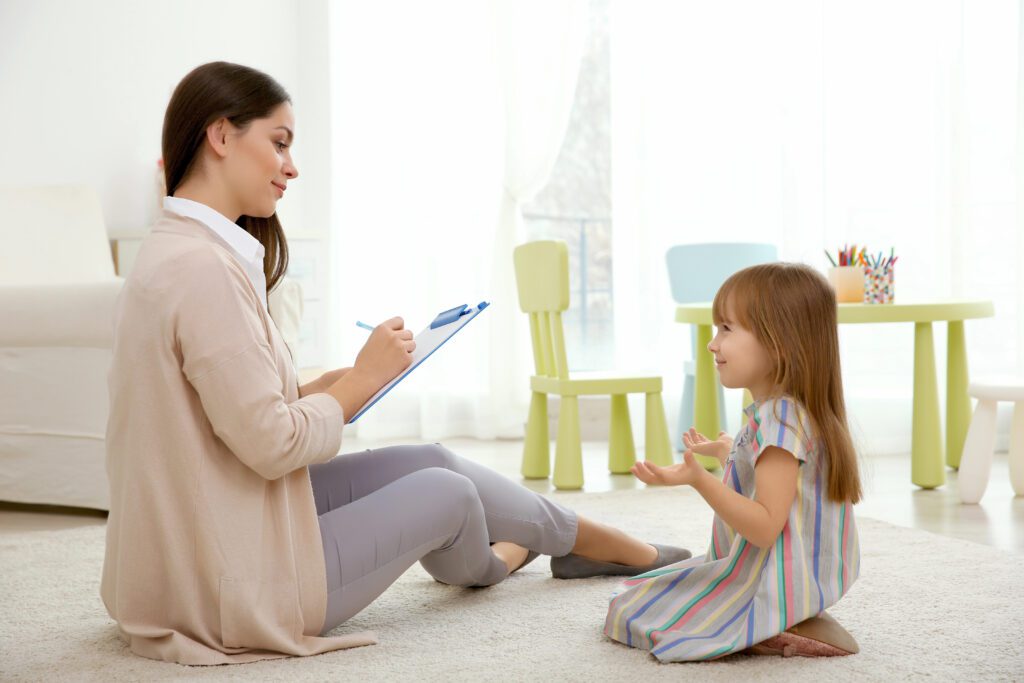
What to Expect During Your Child’s First ABA Therapy Session
When your child is diagnosed with autism or developmental delays, the journey ahead may feel daunting. As a parent, you might be unsure of where to start, but you’ve already made the first and most important step by seeking ABA therapy. ABA therapy is a powerful tool that can help your child communicate, learn, and grow. In this post, we’ll guide you through what to expect during your child’s first ABA therapy session. We’ll cover everything from preparation to emotional support and how ABA therapy providers can help your child thrive.
What is ABA Therapy?
Applied Behavior Analysis (ABA) therapy is a science-backed approach designed to help children with autism or developmental delays by teaching them important skills and reducing behaviors that may hinder their development. ABA therapy focuses on using positive reinforcement to encourage desired behaviors and gradually replace undesired behaviors. It’s customized to meet each child’s unique needs, which makes it an incredibly effective tool in promoting communication, social skills, and independence.
The therapy relies on breaking down skills into small, manageable steps and reinforcing them consistently until the child masters them. Whether it’s learning how to greet someone or how to stay focused in class, ABA therapy helps children build the foundation for long-term success.
Preparing for Your Child’s First ABA Therapy Visit

The first ABA therapy session is a significant step for both your child and your family. Knowing how to prepare yourself and your child is therefore important for a smooth, positive experience.
While your child may not fully understand what ABA therapy is, talking with them calmly can help set the tone for the session. Let them know that it’s a special time where they’ll learn new things with the help of a therapist. This helps reduce anxiety and makes the experience more comfortable.
Essential Documents and Information to Bring to the ABA Therapy
Make sure to bring key documents and information to the session so the ABA therapist can create the best plan for your child. These include:
- Medical History: A summary of your child’s health and any diagnoses.
- Developmental Milestones: Information about how your child has developed over time.
- Behavioral Concerns: Any specific behaviors you’d like to address during the therapy.
What to Expect During Your Child’s First ABA Therapy Session?
Wondering what will happen during your child’s first session? Here’s a breakdown of what you can expect during the first encounter with an ABA therapy provider.
Comprehensive Assessment and Goal Setting for Effective ABA Therapy
The therapist will begin by conducting a thorough assessment of your child’s behavior and development. This will include observing your child’s interactions, challenges, and strengths. From this assessment, the therapist will establish clear, measurable goals that are tailored to your child’s needs.
- Behavioral Assessment: The therapist will assess your child’s responses to various activities and behaviors to identify areas of improvement.
- Setting Goals for ABA Therapy: Together with you, the therapist will create a personalized therapy plan with goals designed to help your child learn and grow.
Introduction to Key ABA Therapy Techniques and How They Work
ABA therapy providers use specific techniques to teach children new skills and reduce undesired behaviors. Some key techniques that might be introduced during the first session include:
- Positive Reinforcement: Praising or rewarding your child when they engage in desired behaviors.
- Behavior Modification: Using gentle strategies to replace unwanted behaviors with positive alternatives.
- Discrete Trial Training (DTT): A structured approach that teaches skills in short, focused sessions.
These techniques are designed to be effective, encouraging, and adaptable to your child’s pace.
The Role of Parents in ABA Therapy: Actively Participating in Your Child’s Progress
ABA therapy is not just for the therapist to handle—your active participation is crucial for your child’s success. You’ll be encouraged to observe the session, provide input, and reinforce the strategies at home.
- Observing the Session: In the beginning, you might watch how the therapist interacts with your child to understand the strategies used.
- Providing Input: Share your insights and observations about your child’s behavior and development.
A Typical ABA Therapy Structure: What Happens During the Appointment?
While each session may vary, a typical ABA therapy follows a general flow:
- Introduction and Warm-Up: The therapist will greet your child and ease them into the session with a brief, friendly interaction.
- Assessment and Goal Setting: The therapist will assess your child’s behavior and start introducing specific activities.
- Therapy Techniques in Action: Based on your child’s goals, the therapist will guide them through activities, using ABA therapy techniques to encourage positive behaviors.
- Feedback and Wrap-Up: At the end of the session, the therapist will provide feedback to you, including progress updates and next steps.
What Should Parents Expect Emotionally During the First ABA Session?
It’s natural to feel nervous or uncertain before your child’s first ABA therapy session. Here’s what to expect emotionally and how to cope.
Dealing with Initial Nerves: Understanding the Process and Feeling Supported
Many parents feel nervous before the first session, unsure of how their child will react. The therapist will create a calm, welcoming environment that fosters trust and comfort for both you and your child. Remember, it’s a learning experience, and you’ll work together with the therapist to support your child’s progress.
Patience and Consistency: The Journey of ABA Therapy
ABA therapy is a gradual process that requires patience and consistency. Progress might be slow at first, but small successes will eventually add up. Understanding this will help you manage expectations and celebrate each milestone, no matter how small.
Building Trust with Your ABA Therapist: A Partnership in Your Child’s Growth
The relationship between you and the therapist is key to your child’s success. Building trust through open communication will ensure that your child receives the best possible care. Don’t hesitate to ask questions or share your thoughts—it’s all part of the process of working together for the best outcome.
How to Support Your Child at Home Between ABA Therapy Sessions?
ABA therapy doesn’t end when the session is over. As a parent, there’s a lot you can do to support your child’s progress between sessions.
Reinforcing ABA Therapy Techniques at Home: Practical Tips for Parents
To ensure that the progress made in therapy continues at home, try using the same ABA techniques:
- Positive Reinforcement at Home: Reward your child when they complete tasks or exhibit positive behavior, just like the therapist does in the sessions.
- Modeling Skills: Practice new skills at home, such as requesting help or completing a simple task, to reinforce learning.
Why Consistency is Crucial in ABA Therapy for Long-Term Success
The key to ABA therapy’s success lies in consistency. The more consistently you apply the techniques and strategies at home, the faster your child will make progress. Routine and structure can help them feel safe and supported.
Tracking Progress and Challenges: Helping Your Child Grow with ABA Therapy
Keep a journal or log to track your child’s progress. Note any challenges they face, as well as the strategies that seem to be working. This log can be shared with the therapist to adjust the therapy plan as needed.
Enhancing the Outcomes of ABA Therapy
ABA therapy is often most effective when combined with other therapies, such as speech therapy and occupational therapy. Here’s how these therapies complement ABA therapy:
Speech Therapy: Supporting Communication Skills Alongside ABA Therapy
Speech therapy can help children with autism improve their ability to communicate effectively. Speech therapy combined with ABA therapy provides the tools needed for verbal and non-verbal communication, further enhancing your child’s social interactions and ability to express themselves.
Occupational Therapy: Improving Daily Skills and Sensory Processing
Occupational therapy focuses on fine motor skills, daily activities, and sensory processing. This therapy, when used alongside ABA, helps your child better engage in everyday tasks, from brushing their teeth to navigating social situations.
A Holistic Approach: Combining ABA Therapy with Other Pediatric Therapies
ABA therapy providers often collaborate with other specialists to create a well-rounded plan for your child. This holistic approach addresses all areas of development and ensures that no aspect of your child’s needs is overlooked.
Achievement Balance – Leading ABA Therapy Providers in Grapevine, TX

At Achievement Balance, we understand the unique needs of every child, and we approach each ABA therapy session with a deep sense of compassion. We’re not just providing therapy—we’re offering hope, guidance, and a strong partnership with families in Grapevine, TX, and surrounding areas like Southlake and Colleyville.
We treat your child as if they were our own, tailoring our ABA therapy sessions to fit their specific needs. Our team of experienced ABA therapy providers is dedicated to fostering an environment of love, care, and trust. Together, we’ll work to unlock your child’s full potential.
Embracing A Future of Possibilities with ABA Therapy
Starting ABA therapy is a huge step toward supporting your child’s development. It’s normal to feel uncertain, but know that you’re not alone. Achievement Balance is here to support you every step of the way. Through patience, consistency, and the compassionate care of A\BA therapy providers, your child will make meaningful progress.
If you’re ready to take the next step, reach out to us today at (972) 410-5297 or email info@achievement-balance.com. Let’s work together to build a brighter, more confident future for your child.
